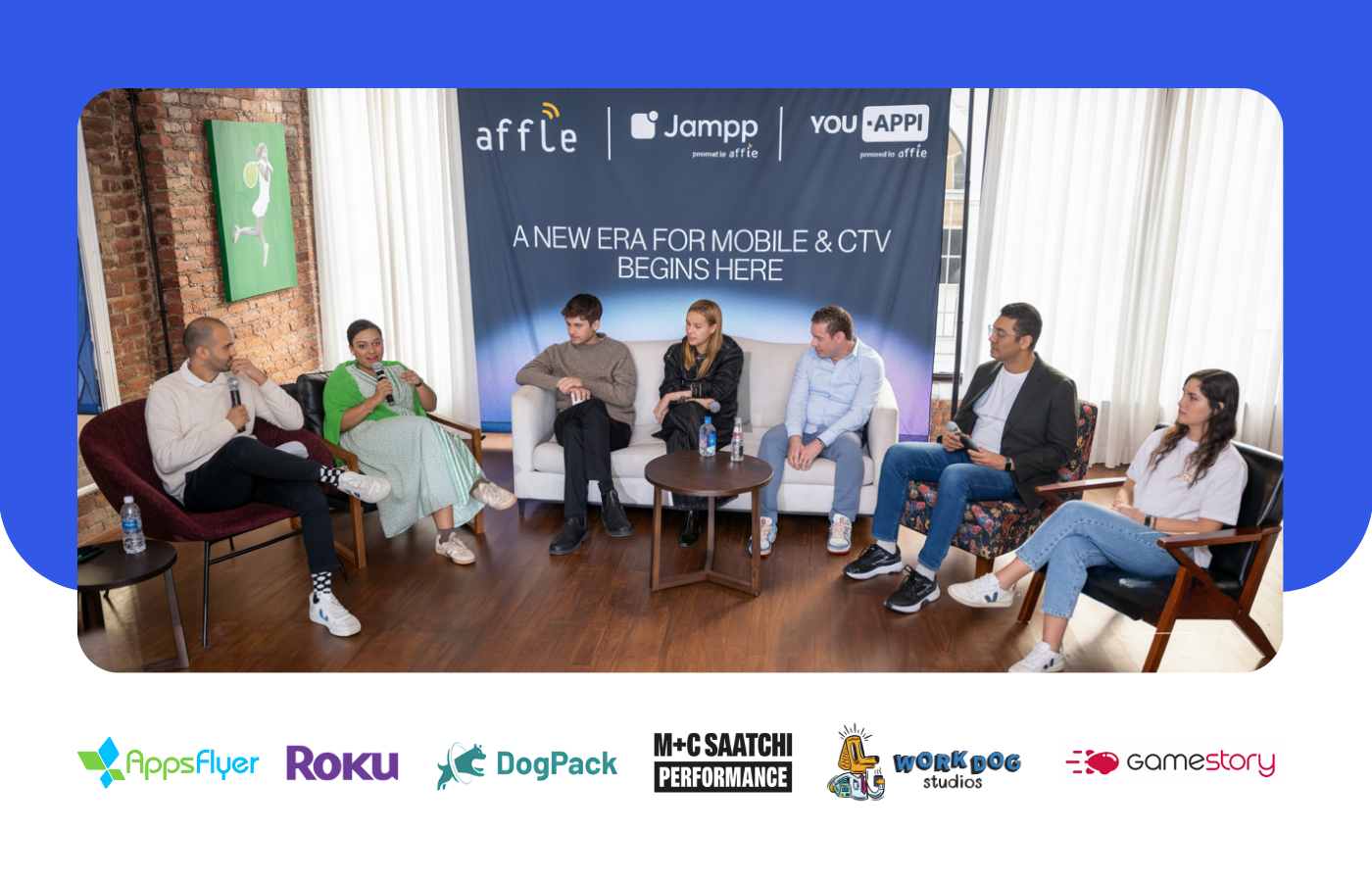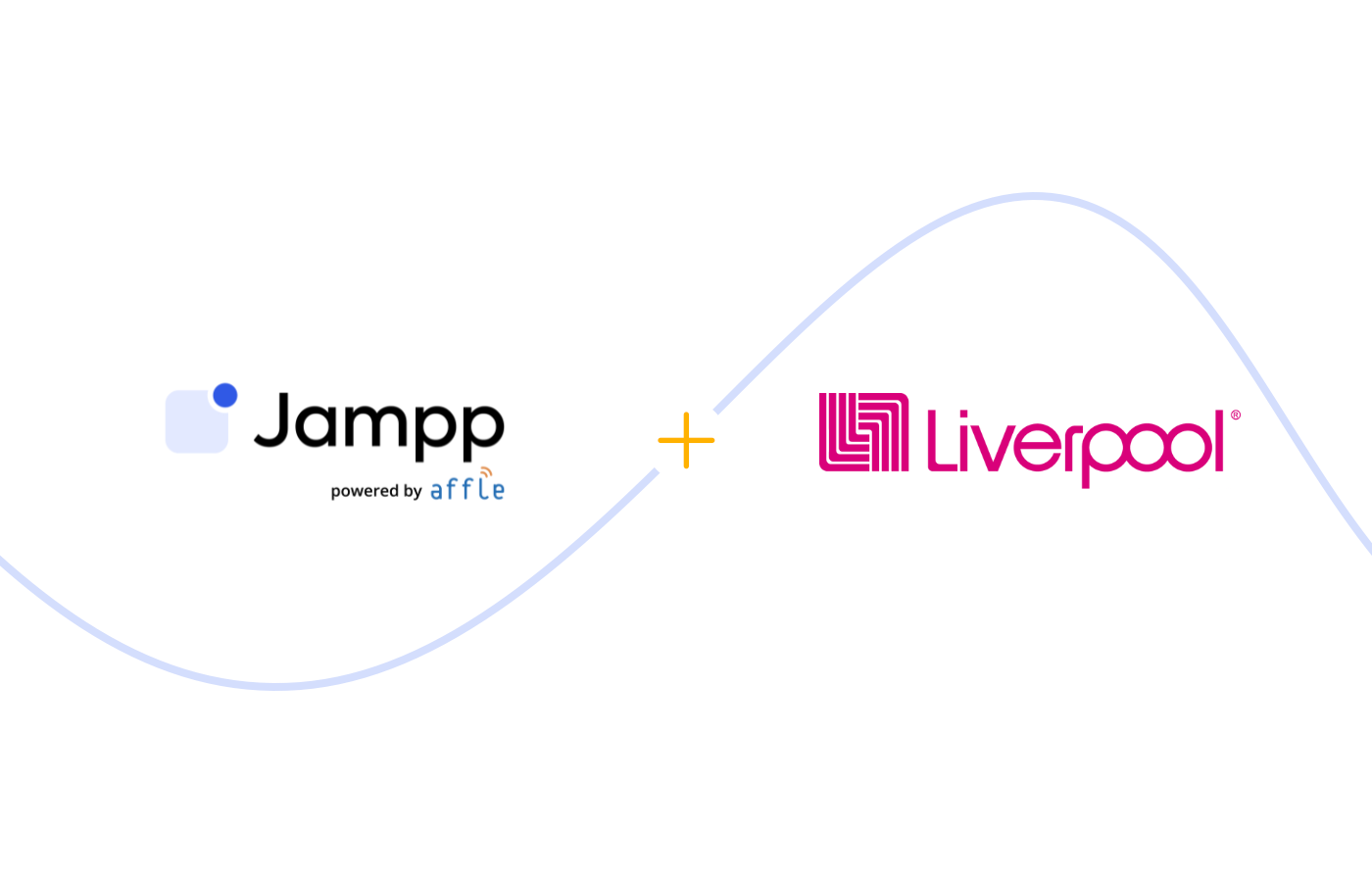Breaking down common misconceptions about SKAdNetwork
Experts from Adjust, AppsFlyer, Branch, Kochava, Singular, and Jampp dispel some of the most common myths about SKAdNetwork.
March 16, 2023

From the outset of AppTrackingTransparency (ATT), Apple has been constantly updating its SKAdNetwork framework. In 2022, SKAN 4.0 was released with iOS 16.1, and it’s likely that we will get a new SKAN version this year. This dynamism means the industry has to constantly re-adapt and address new questions—and we want to make sure to provide all the necessary answers.
In this article, Jampp partnered with Adjust, AppsFlyer, Branch, Kochava, and Singular to dispel some of the most common myths and misconceptions regarding SKAdNetwork.

Misconception: Users need to opt-in to IDFA to use SKAdNetwork
Reality: SKAdNetwork is consent agnostic
“We often still get asked if users need to be prompted through the AppTrackingTransparency (ATT) framework for consent in order to be measured through SKAN. To be clear, SKAdNetwork doesn’t require any user consent, as it's consent agnostic, anonymous, and privacy-first by design.” —Grant Simmons, VP Foundry at Kochava.
In fact, SKAdNetwork is the best method to track users who opt out of IDFA when prompted. As opposed to IDFA, SKAdNetwork attribution means we cannot connect a specific install to a user—but you still can connect it to a group of impressions/clicks within a unique ID, functioning as a “cluster” of users or variables.

Misconception: SKAdNetwork reporting only includes opt-out users
Reality: SKAdNetwork reporting returns results from users who opt in and opt out
“Not everyone realizes SKAN reporting includes both ATT opt-in and opt-out users; this can be super confusing for someone just getting started.” —Adam Landis, Head of Growth, Branch.
Last year, ATT opt-in rates hit 25%[1], which means that, on average, app marketers lose visibility on 75% of users from paid media campaigns. Relying on SKAdNetwork reporting, on the other hand, allows advertisers to access insights on how opt-in and opt-out users are interacting with their mobile app. However, as Adam points out, you’ll need to deduplicate opt-in users from your SKAN reporting to avoid double-counting your installs!

Misconception: SKAN 4.0 allows marketers to access granular campaign data
Reality: with SKAN 4.0 you can access more insights, but it’s still challenging
“Some high-level interpretations of the new features lead marketers to believe that they’re going to be loaded with lots of data, quickly. While more insights can certainly be extracted by leveraging the new features, much like with SKAN 3, they require deep strategic thinking, robust technical solutions, and proper implementation from the ad network side." —Roi Tamir, Product Manager at AppsFlyer.
SKAN 4.0 does offer more data granularity when compared to previous versions, but accessing that granular data on a regular basis is highly challenging. There are three main factors that affect the type of insights you receive:
- The count of installs and post-install interactions generated by the campaign ➡️ Simply put, the more installs the campaign generates, the higher the crowd anonymity; and, therefore, the more campaign data you receive.
- The number of postbacks ➡️ In SKAN 4.0, advertisers can receive up to three postbacks, but each of these postbacks features different levels of data granularity.
- Ad networks’ use of source identifiers ➡️ The new “source identifier” field enables ad networks to receive better granularity in campaign dimension reporting. However, it is up to them to decide how to utilize it and support their customers.

Misconception: If SKAN doesn’t work for you, you can rely on fingerprinting
Reality: Fingerprinting might not be here forever
“A common myth is the belief that marketers don’t really need to worry about SKAN as they can always rely on probabilistic matching. In reality, privacy concerns in advertising cannot be avoided, and early adopters will be better prepared for future privacy frameworks and strategy development. We all know Android Privacy Sandbox is coming, and there has been heavy investment in advanced analytics and modeling for accurate privacy-safe performance insights. The future is pointing towards privacy-safe measurement and analytics solutions rather than relying on legacy attribution methods.” —Susan Kuo, COO & Co-Founder of Singular.
While Apple hasn’t obstructed nor banned the use of fingerprinting, it has stated that this practice should be off-limits for marketers running iOS campaigns. However, this doesn’t mean that Apple is not willing to restrict the use of fingerprinting in the future. To that end, app marketers should always test SKAdNetwork to prevent their iOS efforts from depending solely on fingerprinting. Testing SKAN now can help marketing organizations ease the transition to future privacy frameworks that will eventually impact user acquisition on all platforms.

Misconception: Lock Window enables you to receive a postback whenever you want
Reality: It only works when a user has already launched the app
Let’s say the advertiser is looking to lock the second attribution window on day 5 after install. If the user doesn’t launch the app at any moment between the start of the second conversion window and day 5, Lock Window won’t be triggered. If the user launches the app on day 6, the request to lock the conversion value will be sent at that time.
“Although a user does have to be online for the lock to be triggered, there are still strong use cases for lockWindow. For example, if you know the time post-install when the bulk of your users perform key events, you can set a static lockWindow for your app, lock the postback and receive it sooner. For the other windows, you should ideally already know if the campaign is converting well or not and try to get as much information as possible in the second and third postbacks by allowing the measurement window to run its course.” —Sandra Johansson, Product Manager Next Generation Measurement at Adjust.

Misconception: The shorter the attribution window, the better
Reality: It’s about finding the right window for your app
“It’s important to consider SKAN’s timers and Lock Window parameter, especially if you’re looking to optimize your campaign across key events. The campaign might be generating events that aren’t being registered because of the type of attribution used.” —Rocio Vivot, Head of Customer Success at Jampp.
With long attribution windows, the campaign data you receive offers little added value: you access the insights at a time when it’s challenging to estimate at what moment the interactions actually took place. Conversely, in SKAN, if you only rely on short attribution windows to get the data sooner, you might lose visibility on any interactions that take place after you receive that postback. We recommend working together with your DSP partners to identify what are the best moments to receive your postbacks based on how users interact with your app.
How SKAdNetwork can help you grow your app business
At Jampp, we’re seeing that advertisers running both SKAN and IDFA campaigns achieve at least 37% lower CPIs on their SKAN campaigns, on average. Our team of experts can help you start testing SKAdNetwork and find the right strategy to boost your iOS campaigns in the post-IDFA era. Drop us a line to get started 🙌.

References
[1] Flurry analytics, 2022.
Subscribe to our email newsletter









